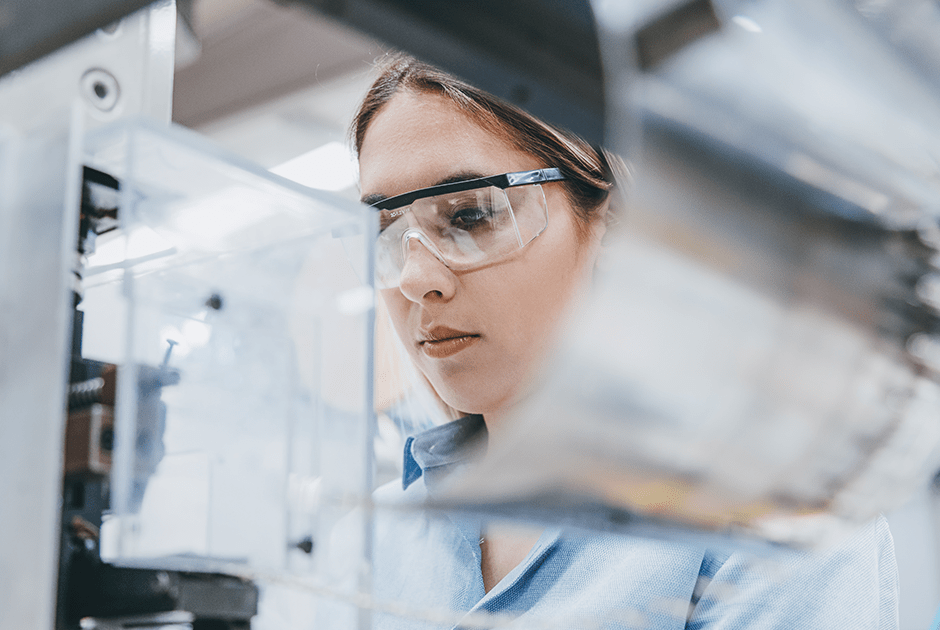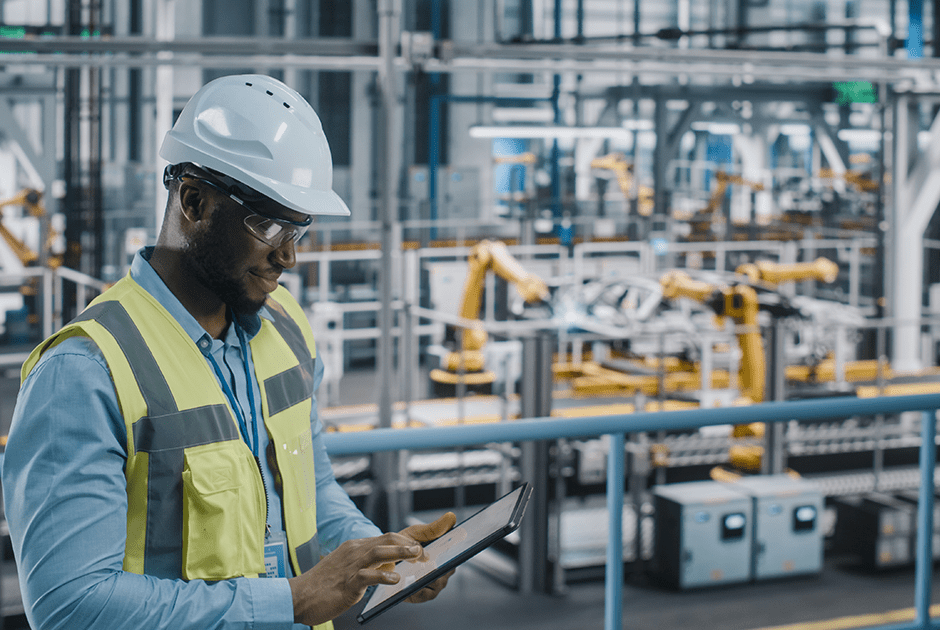With the EV revolution in full-swing, news of Gigafactories being built around the world is becoming commonplace. But what exactly is a Gigafactory, and what makes it distinct from a typical car or engine plant?
Over the coming paragraphs, we will explore how these complex facilities are stretching the technologies used in the design of what is a unique built asset, and how these Gigafactories are at the heart of our future industry.
Understanding the genesis of the ‘Gigafactory’ – did Tesla take a ‘Leaf’ out of Nissan’s book?
Gigafactories are so named as they provide Giga Watt hour (GWh) levels of battery manufacturing output, with a 1GWh facility providing enough batteries for approximately 17,000 vehicles.
Tesla is best known for the Gigafactory nomenclature, so it is surprising then that the UK’s Envision 2.5 GWh facility in Sunderland, supporting the Nissan Leaf, opened in 2012, predating Tesla’s first Nevada Gigafactory by some four years.
Gigafactories have more in common with the pharmaceutical industry than the automotive industry
Unlike car manufacturing facilities, battery production is more akin to pharmaceuticals/microchip manufacture in its complexity. Even though battery manufacturing has been around for many years, the sheer scale required due to the exponential growth of Electric Vehicles (EVs) should not be underestimated.

In these battery manufacturing facilities, large parts of their production areas, which can be over 600m long, have complex requirements including the need for clean rooms (rooms with filtration to achieve very low levels of dust/particles), with certain manufacturing areas also requiring very low humidity levels, which is a challenge in itself. More on that later…
Timing is everything, manufacturers need to scale-up now or lose out to those who have
The growth in EV adoption is largely down to the phasing out in many European countries of the internal combustion engine by 2030.
In Europe alone, 38 Gigafactories for Li-Ion battery cells have been announced - these facilities will generate between 600 and 1000 GWh of batteries per year by 2030. This is enough to equip 10-17 million 60kWh electric vehicles, which roughly equates to Europe’s current annual total domestic vehicle sales.
This requirement for new Gigafactories will put significant demand on many areas, including the need for very large sites with hundreds of Mega Watts of power available, manufacturing process systems, clean and dry room equipment as well as the minerals, foils and chemicals necessary for battery manufacture.
All of this will need to be provided alongside the development of recycling technologies, which will ultimately deliver a sustainable “cradle to cradle” (rather than the traditional ‘cradle to grave’) strategy to meet the forthcoming European legislation on battery production and re-use.
The rub is if these European facilities cannot be delivered in a timely manner, then this could be a Kodak moment for the European automotive industry. There is now a very real impetus to scale up delivery at speed, otherwise we could run the risk of witnessing the decline of an entire industry if it doesn’t keep up with the pace of technological change.
Clean, dry and cool – mechanical and electrical systems are the heroes of the Gigafactory… but they don’t come cheap
Gigafactories require various and differing environmental requirements, all of which need to be dealt with robustly at the design stage to ensure reliability of the finished product and maximisation of its life.

The most onerous environmental requirement for battery manufacture is the demand for not only ‘Clean’, but also ‘Dry’ room conditions. These requirements have a significant impact on Mechanical and Electrical (M&E) systems and energy usage. In fact, their complexity can lead to M&E costs often making up more than half of the overall building construction cost.
The manufacturing process also requires ISO Class 7/8 ‘Clean’ rooms, which typically need between 15 and 30 air changes of HEPA filtered air an hour. This is to ensure the rooms, the process and the batteries are kept at a level of cleanliness that will not negatively impact their performance or longevity.
With much of these clean spaces requiring dry conditions, specialist dehumidification air handling units are used, which rely on numerous moisture reduction techniques to achieve air dryness down to a dew point of -50o C. To put the relative humidity (RH) required into perspective, this dryness would not even be achieved in the peak of winter in Lapland.
Without these low humidity levels and clean conditions, contamination of the battery Anode and Cathode coatings and electrolyte could occur, which would likely cause unacceptable levels of failure.
Even once the batteries are assembled, there are still environmental demands, for example within the High Temperature area of Formation, Ageing and Testing where up to 45oC is required to ensure quality standards are met.
Plan for efficiency – understanding the impact of people and plant
The dry production areas also seek to minimise any extraneous influences using hermetically sealed (airtight) doors whilst ensuring careful control of occupant numbers and transfer of process materials. This is to make sure that these rooms are not only kept dry and clean but operate as efficiently as possible.
In the design, careful consideration must be given to the activities being undertaken in the space, and how many people will be undertaking them. For example, doubling the number of occupants in a space doubles the amount of dehumidification equipment required. Whilst increasing the environmental requirements, for example, from -40oC to -50oC can quadruple the dehumidification demand.
Futureproofing Gigafactories to keep pace with technological advancements
Although battery densities aren’t quite like microchips, where Moore’s law stated that a chip’s power doubled every 18 months, the pace at which we are seeing batteries kWh/kg density increase is still significant. Currently this is typically averaging 5-8% per year, which equates to a doubling of energy density every 9-14 years.
The difference for batteries is that the change is not about cramming more transistors on a microchip, but about the alterations of battery chemistry. This is an extremely complex issue, as their storage ability needs to be balanced against many differing factors including thermal stability and longevity.
We are, however, aware of some of the impacts that chemistry change may have on manufacturing and how we design new facilities. We’re liaising frequently with the battery specialists to ensure potentially changing requirements are understood and, where appropriate, are catered for – if not in the specialist rooms equipment, at least making sure the site and distribution infrastructure is adequately addressed in the design.
Equally, we are hopeful that continued process innovation could see relaxation of some M&E elements. For example, if we can dry coat the Anode and Cathode foils instead of baking the coating on in ovens – as is being researched by many, including Tesla – we would see one of the most energy-hungry areas of production reduced.
Benefitting from our experience
A Gigafactory is a very specialist facility, and the provision of timely advice in the development of a project is key to its successful delivery.
This is something we have seen first-hand working with our global automotive clients across Europe and North America. For example, we recently partnered with Texas-based Wallbox to manage the design and development of their new EV charger manufacturing facility in the US, and are also working on the design and delivery of a number of Gigafactories in Europe including one of the largest Gigafactories to produce electric vehicle batteries in the Nordics.
In these examples, our expertise goes beyond our traditional Programme Management role. From developing initial process layouts, to providing focused utility, energy and M&E advice, we have been able to support servicing strategies as well as helping to define the spatial layouts for the project, therefore providing more robust solutions at these early stages.
Sustainability is also a crucial requirement, and we understand how important it is to address the viability of a project in light of Net Zero and ESG requirements. For example, for one of our Gigafactory clients, we are looking at solutions that utilise process waste heat to deliver heating and hot water to its neighbours via a district heating network.
This is something that we’re passionate about, so if you’d like to learn more about what we do or have any questions about how we can help you, or want to continue the conversation please contact:
Chris Evans, Senior Technical Director for the Automotive Sector, chris.evans@arcadis.com
Steven Smith, Global Automotive Sector Lead, steven.smith@arcadis.com
David Aimable-Lina, Global Solutions Director – Industry 4.0, david.aimablelina@arcadis.com
Andy Back, Technical Director, andy.back@arcadis.com
Martijn Karrenbeld, Global Director Private Sector Industries / Manufacturing, martijn.karrenbeld@arcadis.com





